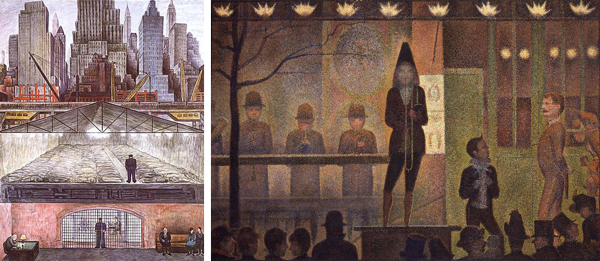Upper Level Seminar: Realist Art and Visualzing the Social

Realist art is an art committed to creating convincing visual representations of the world. As such it poses important questions about how we visualize social reality. This course focuses on art whose realism is enlivened both by artistic experimentation and engagement with social issues such class divisions and inequalities, labor and its exploitation and the enmeshing of individuals in larger social structures and forces. In its earlier nineteenth century phase, realism took the form of depictions of scenes of everyday working class and middle class life and presented a critique, often implicit rather than explicit, of an accepted or privileged view of the world. Such tendencies continued into the twentieth century, but changed in character as traditional naturalistic representation began to seem increasingly incapable of representing the often abstract realities of modernity. While social realism persisted, the realist impulse also fostered experiments with new visual forms and structures - New Objectivity in Germany, for example, and the work of the Mexican muralists – eventually incorporating photographic and mass media imagery as essential to a valid picturing of the modern world. The course concludes with a discussion of how the social realities and conflicts of our time are being visualized in present-day art.
Textbooks/Other Materials: None
Course Requirements:
Intended Audience: Upper level undergraduates with some back ground in 19th/20th century art and culture
Class Format: Two one and a half our seminar discussion sessions
Estimated Cost of Materials: $0-$50
HISTART Distribution Requirements: D. Europe and the US, 4. Modern and Contemporary
Poster Images: (L) Diego Rivera - Frozen Assets, 1931 (R) George Seurat - Circus Sideshow, 1887-8